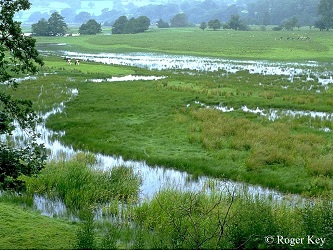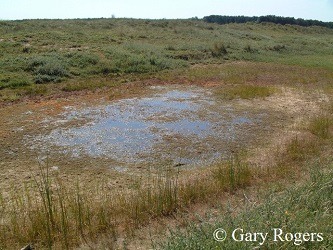Current ISIS code: W221
Previous assemblage name: W212 undisturbed fluctuating wetlands.
Linked assemblage: n/a
Description of habitat typically supporting the assemblage: This assemblage type is mainly characterised by ground-living beetles.
This distinctive SAT is best expressed in floodplains and the draw-down zones of reservoirs, but can also occur on the edges of fens and seepages where its presence can indicate that the site is becoming dryer. On floodplains it is sensitive to changes in flooding patterns and hence to river management and climate change.

The assemblage type is restricted to localised areas which flood in the winter, but dry out in the summer to expose coarse litter of sufficient quantity to maintain a highly humid environment. The litter may sometimes be partially subterranean in layers between deposits of silt imported by winter floods. Disturbance is more or less limited to fluctuations in water levels.
Larvae are presumed to develop in or underneath the litter and are probably hygrophilous rather than aquatic. The main breeding season for many species is in spring, when the larval habitat is exposed by falling water levels.
The best examples of this assemblage type are found in lowland floodplain wetlands, reservoir draw-down zones, wet woodland and mature dune slacks and hollows.

It also occurs in disused gravel pits, but only after vegetation succession to sallow scrub. In fens, it occurs in transitional habitats that are drying out. Several species of the rove beetle genus, Calodera, are early spring breeders and may be particularly associated with vernal pools and hollows in river floodplains. In floodplains the level of hydrological connectivity to the main channel is critical. Secondary channels and ditches are occupied, if they are remote enough to prevent scouring of litter by fast-flowing water, but close enough to be flooded annually. Occupied reservoir margins are often adjacent to woodland which produces large amounts of litter. Assemblages are sensitive to disturbance arising from factors other than flooding, e.g. grazing and mechanical excavation.
Potentially important environmental impacts
- Mechanical disturbance that removes litter from the substrate and leaves a bare, impacted mineral surface.
- Removal of litter and heavy trampling by grazing stock etc. (Because of the localisation of habitat to water margins and small, isolated water bodies, even low stocking levels can cause serious damage to habitat.)
- Change in frequency of flooding and in the severity of disturbance caused by flooding.
- Removal of water level fluctuations by impoundment of water.
Sampling & assessing the assemblage
Standard sampling protocols apply.
Target groups: Coleoptera, molluscs, Diptera.
Fieldwork methods: Primarily ground-searching, with secondary sweeping for diptera.
Alternative methods: Passive trap methods.
Season: Late April to May for beetles.
Discrimination of conservation quality: good
Default target: 4 species
